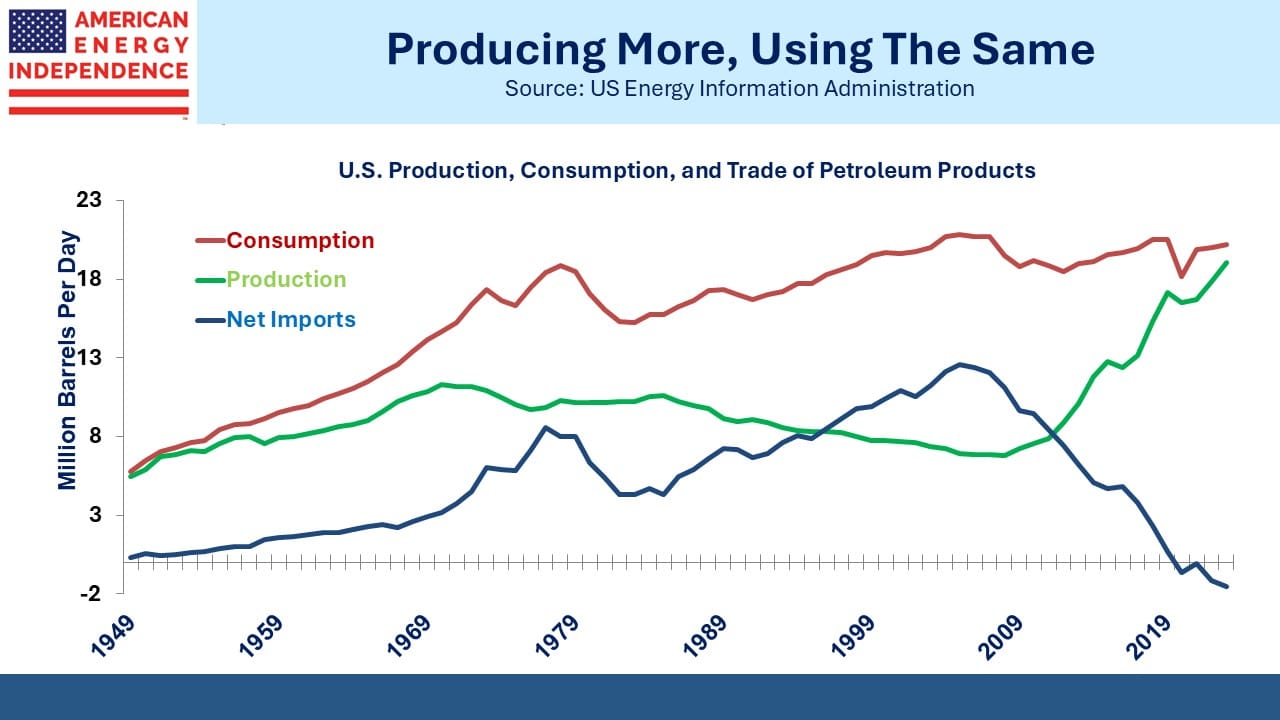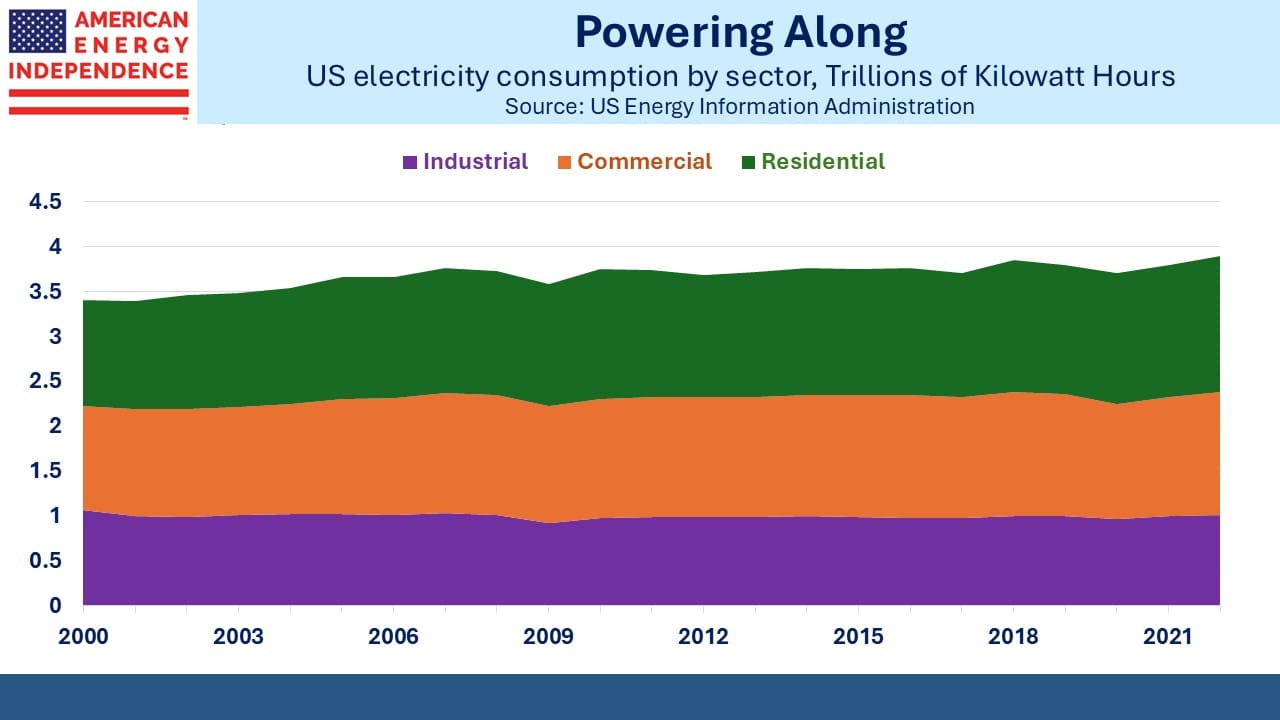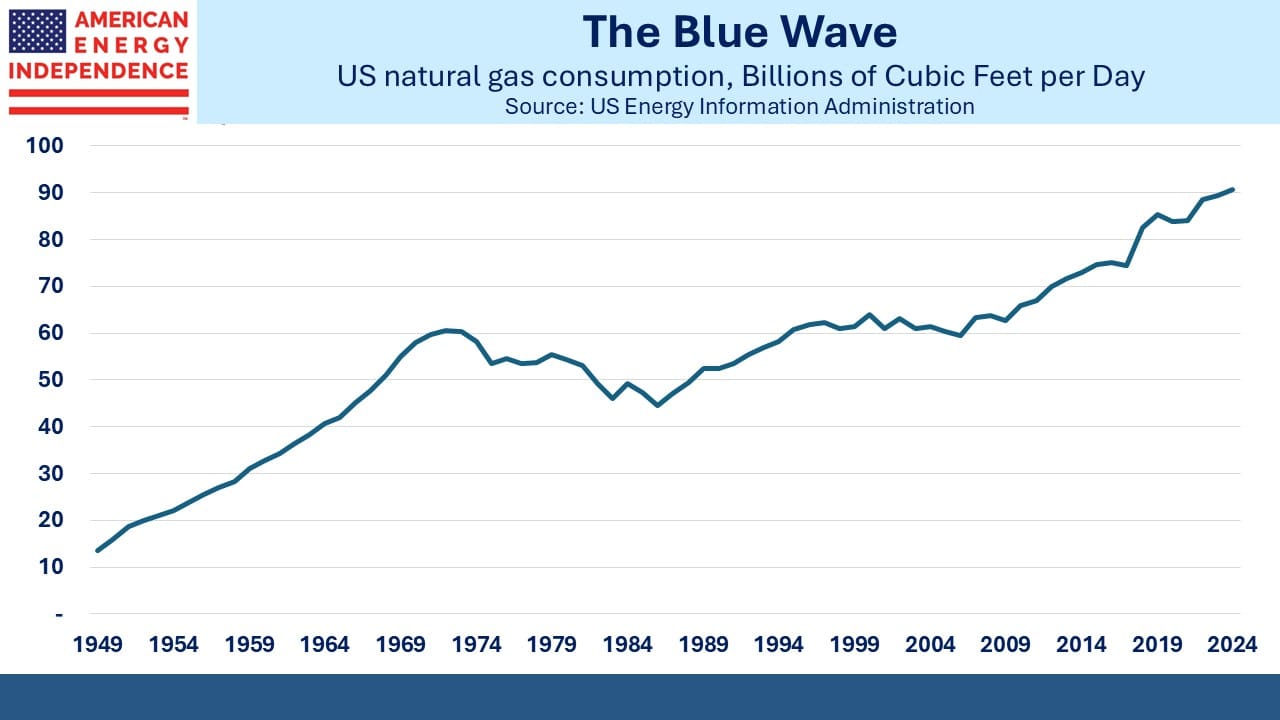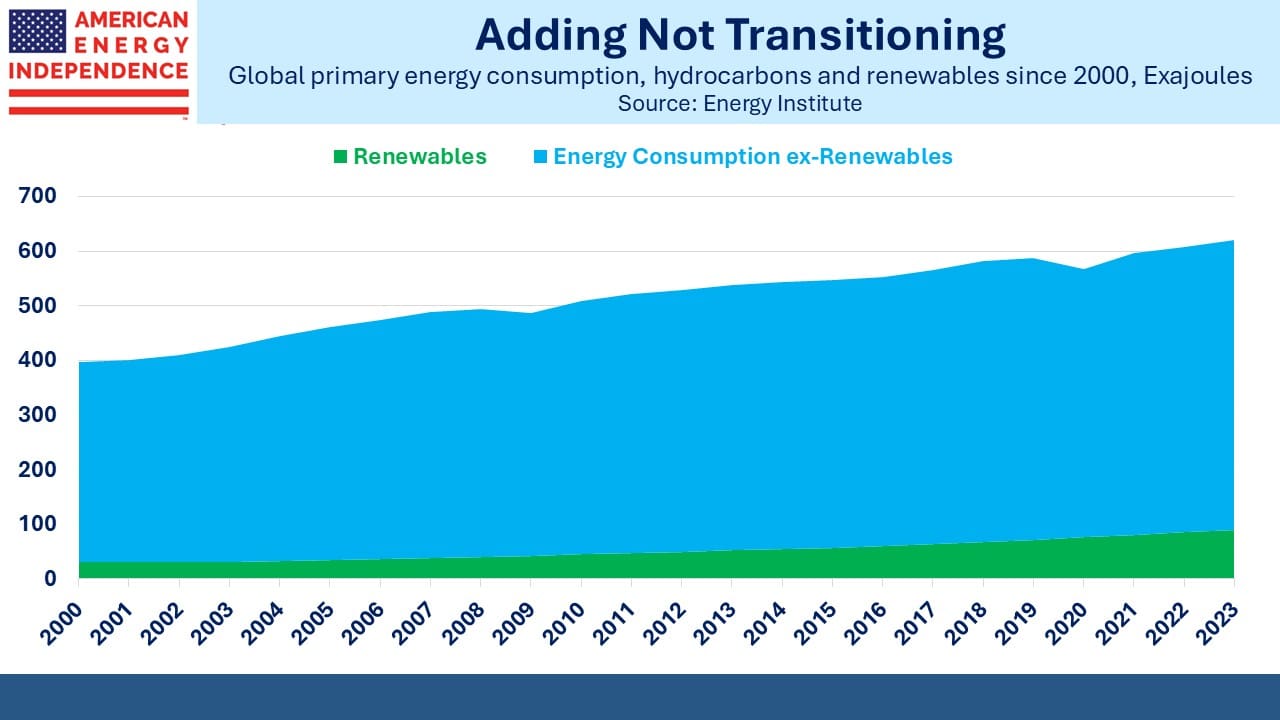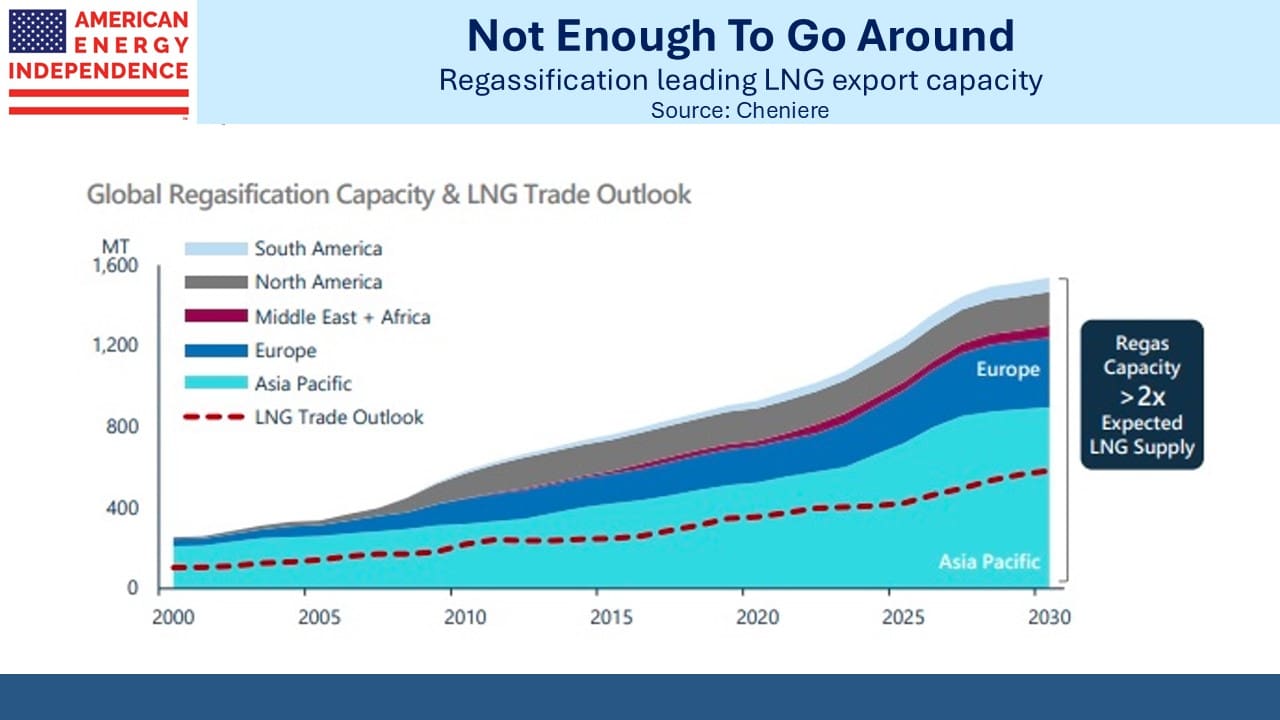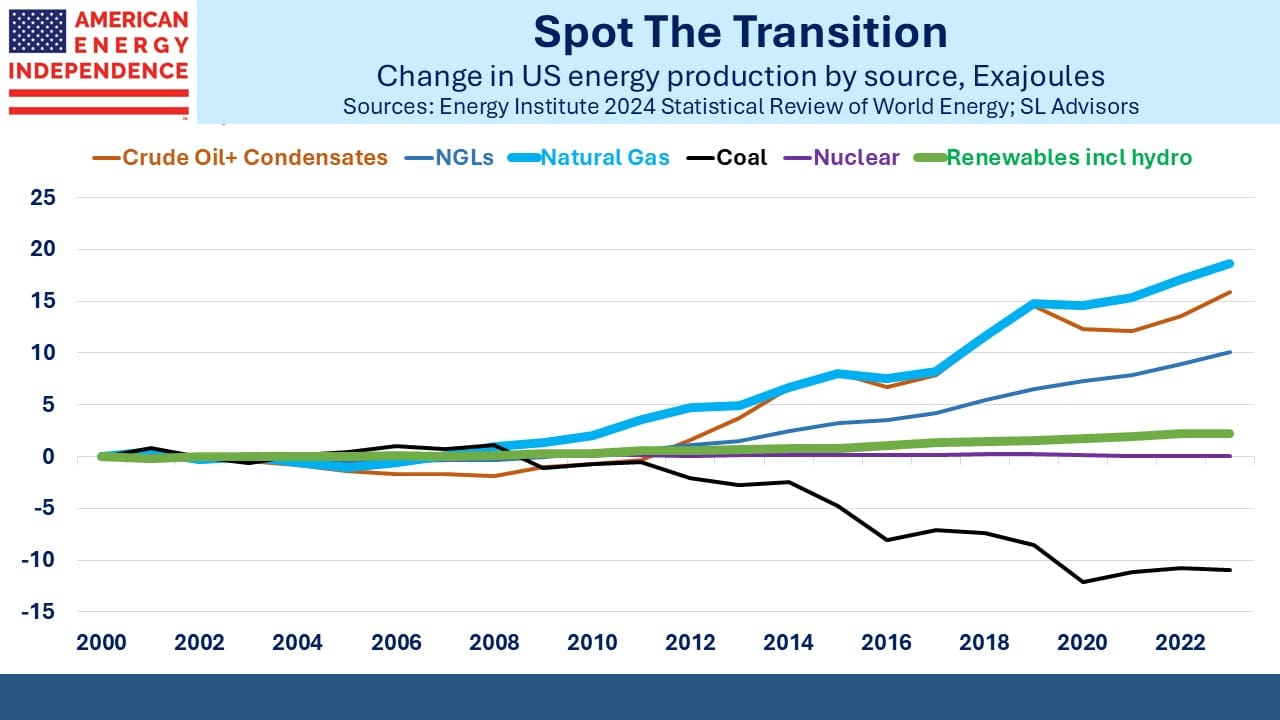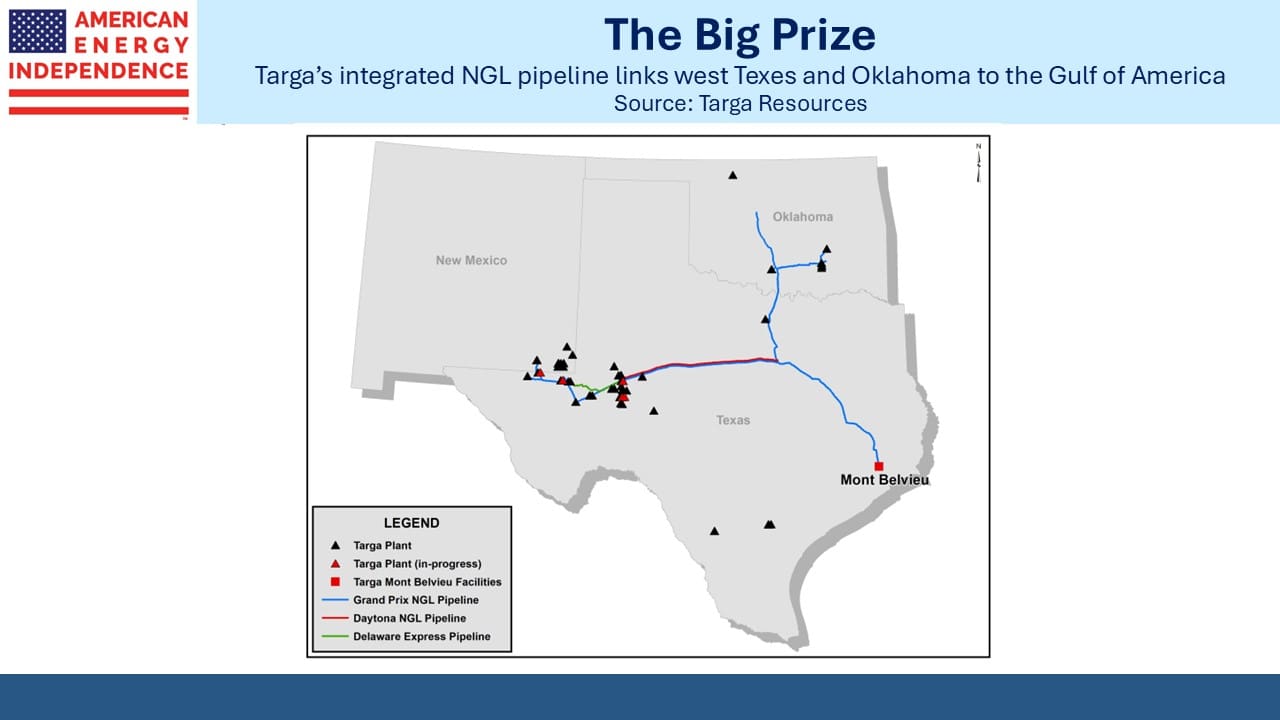Energy Wants To Invest In America

$1.4TN is a huge sum by any standard. It’s more than Spain’s entire stock market capitalization and just behind Switzerland’s. It’s more than Indonesia’s GDP and not far below South Korea’s. This is the sum that the United Arab Emirates (UAE) has committed to invest in America over the next decade. It’s probably the best way to make and stay friends with the White House.
Details are light, although some of that capital has already been committed. There was an announcement that Emirates Global Aluminium (English spelling) would help finance the first new US aluminum smelter in 35 years.
In January Trump asked Saudi Arabia to spend $1TN in the US over four years. Next time they talk he might say that was too low. The muscular, America First tariff-heavy stance the new Administration has adopted isn’t drawing much love from countries that thought they were friends and allies. But it doesn’t seem to be bad for investment flows.
We like a recently announced partnership between the UAE’s sovereign wealth fund and Energy Capital Partners to invest $25BN in energy infrastructure and data centers. We also like that ADNOC, the UAE’s state oil company, invested last May in NextDecade (NEXT). The alignment of interests between the UAE’s money and Trump’s quest to increase US energy exports should be good for LNG export infrastructure.
JPMorgan has examined the order backlog for gas turbines and estimates this will add 6 Billion Cubic Feet per Day (BCF/D) to domestic gas demand by 2030. Currently 35 BCF/D of gas provides 43% of our power, a share that will likely grow with the insatiable demand from data centers.
Meanwhile Morgan Stanley reports that LNG feedgas flows hit a new record of 15.7 BCF/D.
Infrastructure capex has generally been declining for the past few years. Climate extremists have weaponized the legal system, although this was turned back on them recently (see Greenpeace Picks The Wrong Fight).
To a large degree we have the pipeline network we need for liquids. Growing gas demand does require more investment. 2024 saw 17.8 BCF/D of added natgas pipeline capacity, more than double the prior year. Interstate projects were over 10 BCF/D, almost 5X the 2023 total. Pipelines that cross state lines (interstate)are generally more susceptible to court challenges since their permits are issued at the Federal level.
Capacity additions were led by the Mountain Valley Pipeline (MVP) which was only completed due to Congressional action in 2023 (see A Pipeline Win From The Debt Ceiling). MVP moves 2 BCF/D to connect with Transco for subsequent transit south to the Gulf coast. Another 0.8 BCF/D added capacity to a Transco line between Pennsylvania and New Jersey, although climate extremists tried to block this.
Building intrastate is usually simpler because the prior Democrat Administration had less power to intervene. The Matterhorn Express Pipeline connects the Permian to Katy, TX with 2.5 BCF/D in capacity.
Our growing LNG exports require more feedgas. Venture Global (VG) added the Gator Express pipeline which consists of two pipeline segments with 4 BCF/D of capacity to their Plaquemines, LA LNG export terminal. It illustrates VG’s vertical integration.
Most of the added capacity was in the Texas/Louisiana area supporting the Permian basin, with some in the northeast connected to the Marcellus and Utica shales. New England continues to deny itself access to cheap reliable energy, instead preferring to import LNG and reduce their reserve margins for power generation.
The growth in data centers will force a reality check on expensive, intermittent electricity. The PJM grid which includes mid-Atlantic states New Jersey and Delaware while extending as far west as Illinois and Kentucky estimates they’ll need 40% more power generation over the next decade.
The Midcontinent Independent System Operator (MISO) operates in a swath of central US states adjacent to PJM. They estimate their reserve margin during peak summer demand will drop from 17% to around 4% over the next eight years. There’s little doubt that reliance on intermittent solar and wind is increasing the risk of power shortages, since they operate with far lower utilization than traditional energy – typically 20-30%. Offshore wind can be a little higher but the US has almost none of it and it’s not relevant to MISO’s geographic footprint.
JPMorgan’s 15th annual energy paper, titled Heliocentrism is widely available and a rich source of insights. Mike Cembalest, Chairman of Market and Investment Strategy for J.P. Morgan Asset & Wealth Management, does world class research presented engagingly. For those without the time to read it, we’ll periodically include charts.
This one shows why Europe is slowly committing industrial suicide with energy policies that enable developing countries to increase their greenhouse gas emissions. California isn’t far behind. Their citizens are beginning to realize it.
We have two have funds that seek to profit from this environment:
Energy Mutual Fund Energy ETF













